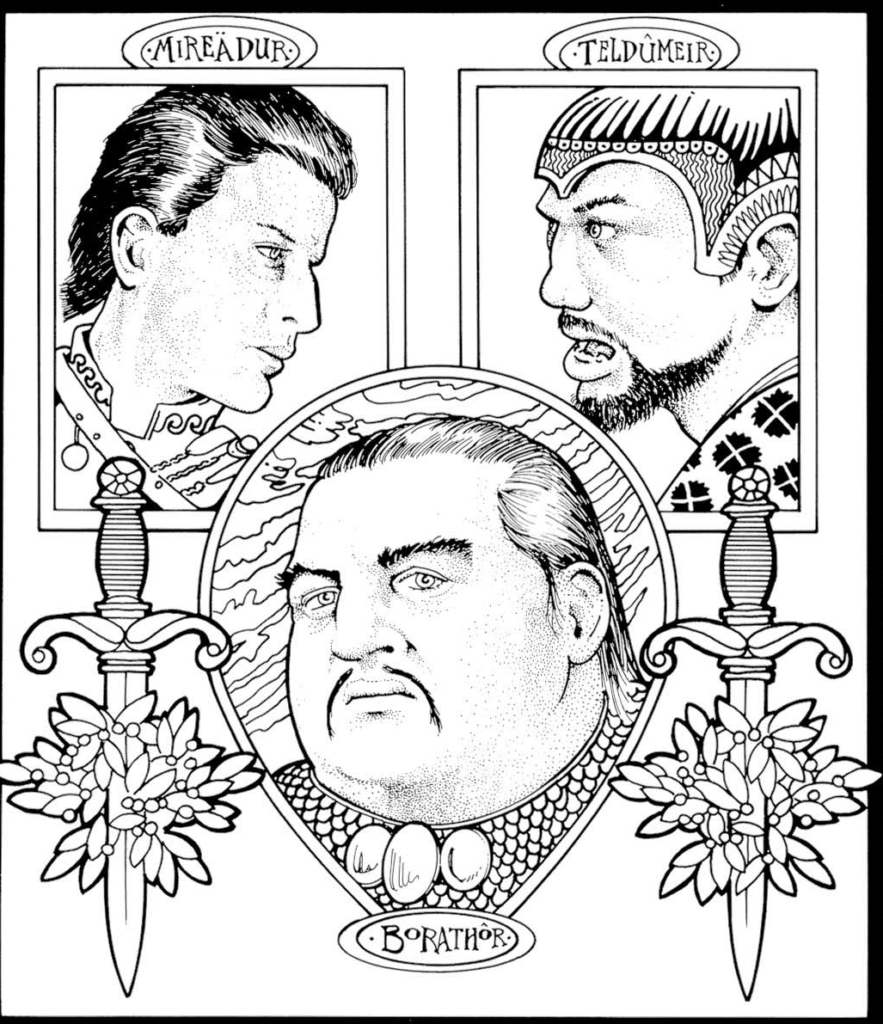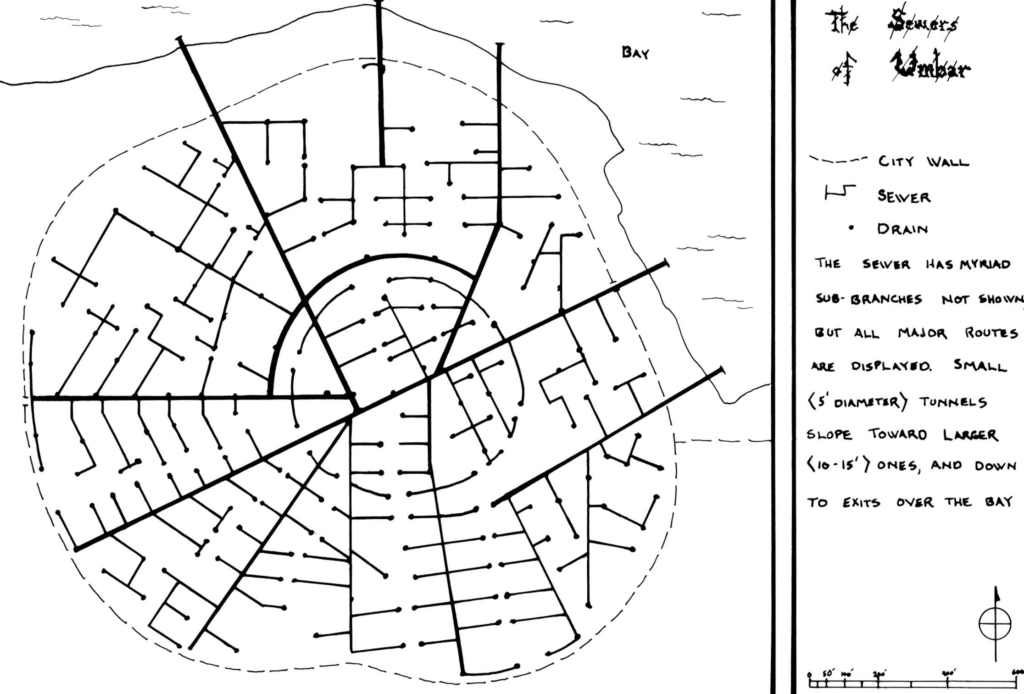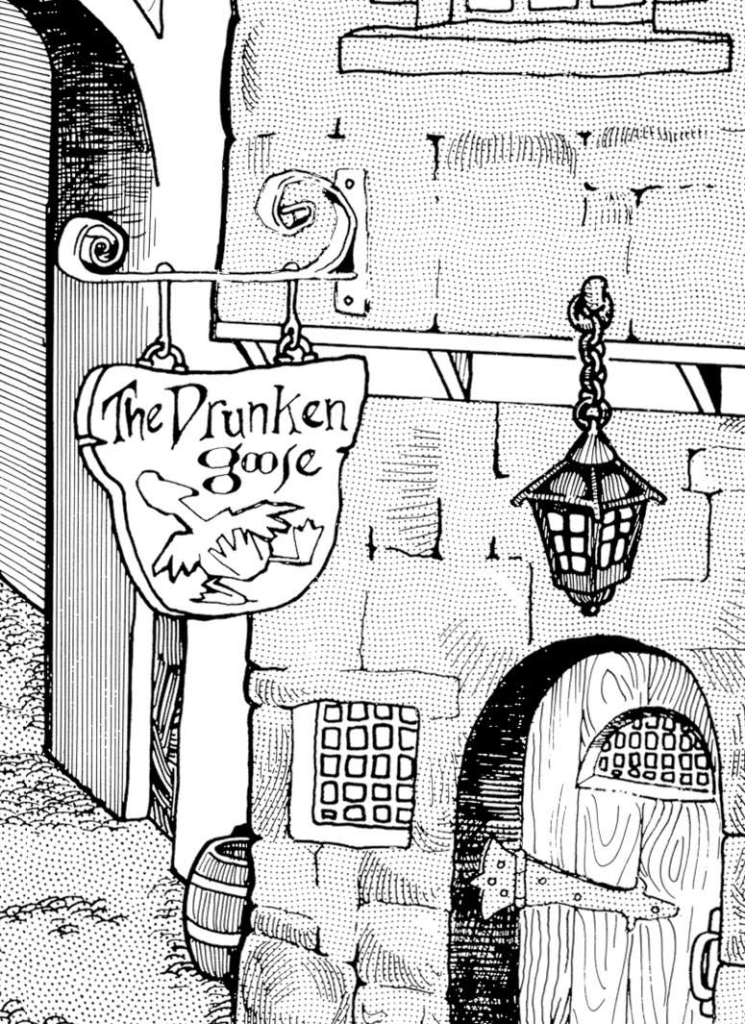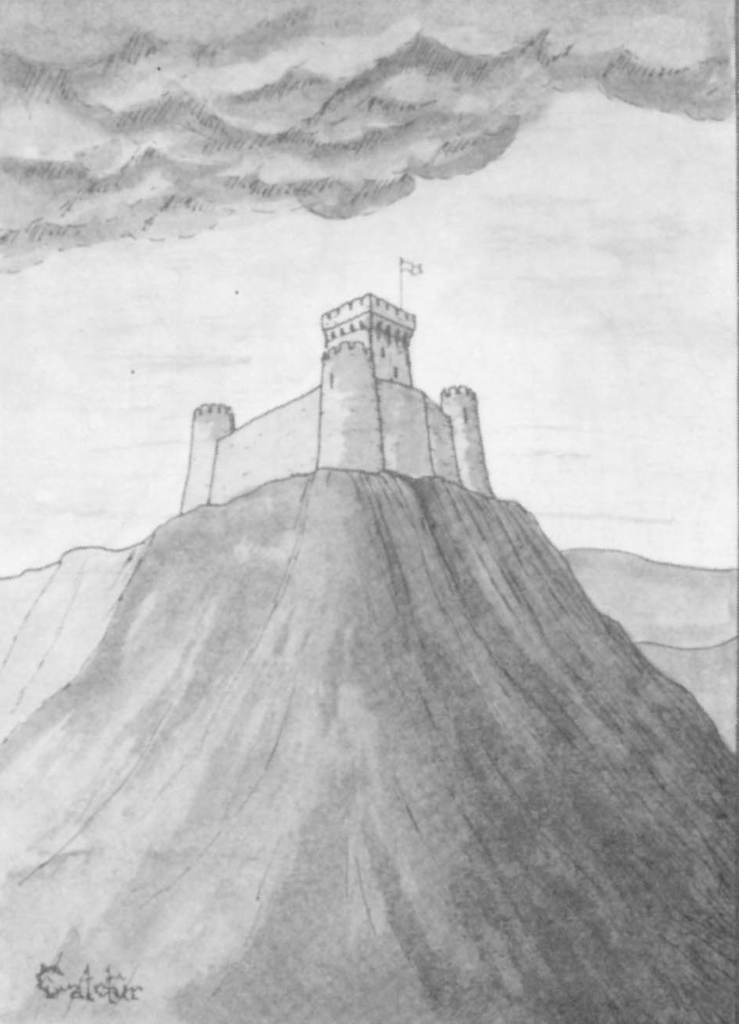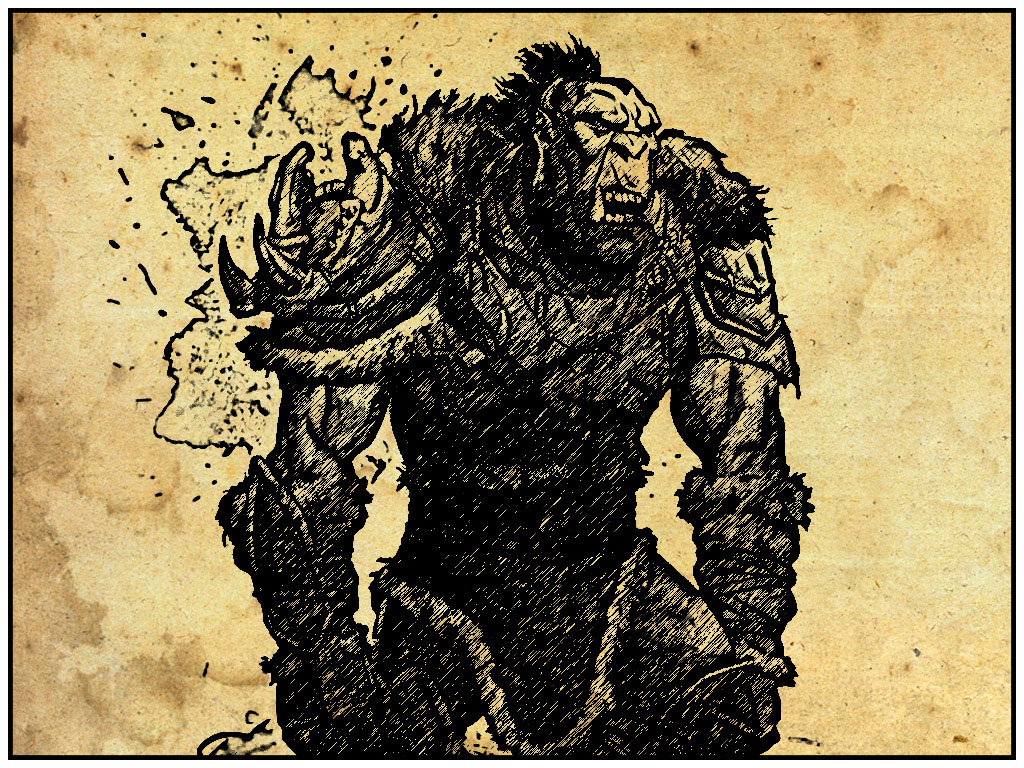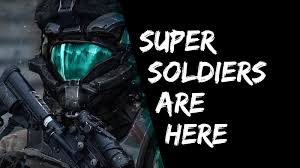
One of the more dense and information rich sections of the Shadow World Master Atlas is the timeline. By the 3rd Edition of the Master Atlas, the timeline has reached 25 pages and would be much longer if it incorporated all the local and regional timeline material found in other SW books. Plus, the timeline is growing: since the original release of the SW Master Atlas Boxed set I believe the timeline has increased by at least 9-10 years (6045 to 6054 TE).
My recent posts about a definitive, final Master Atlas proposes that the dated timeline be removed to another channel. A few years back, my brother Matt (Vroomfogle) started the Nomikos Library; an online database that collected all the timelines and had various search filters.
In any event, the timeline is a rich resource for a GM, not only offering unlimited adventure hooks but providing endless opportunities to explore Kulthea in different times. Sprinkled throughout the time though are many unanswered questions, cool hints and vague references that Terry has yet to explain or explore in detail. One of my favorite: the Xiosians.
The Xiosians were first mentioned in the original Master Atlas: Warrior-Priests that were servants of the Masters of Emer and rode flying magical chariots. In Emer I we got a few more pieces of the puzzle with several mentions:
Warrior-mages on huge steeds begin purging the wilds in central Emer, driving out the ubiquitous Gark and Lugrôki hordes. These knights are harbingers of thecoming of the Masters.
They rule through an order of warrior-mages (the Xiosians)
It is believed that the Changramai are disenchanted Xiosians who left
the service of the Titans (In fact, some are
Corruption spreads through the Xiosians as well.
I was always fascinated by these references and decided to flesh out a background for the Xiosians myself. So putting what few clues I had together…
- Warrior servants of God like beings
- Flying magical conveyances
…I thought this sounds like another group of mysterious warriors that fly on magical steeds and purge the wilderness: The Cloudlords of Tanara. I wanted to tie together a number of loose ends: the origins of the Changramai martial culture, ancient militant orders with ties to the Althans/Ka’ta’viir, mysterious warrior cults and the genetic origins of special warriors like the Cal-chah and Guarlu. I had an idea that tied them all back to the 1st Era.
The Althans and the Ka’ta’viir are primarily an advanced intergalactic imperial society. But there is also a strong oligarchy element of immensely wealthy merchant families. It’s not a leap to assume that both leaders and powerful “Houses” would have their own security force to provide defense, corporate espionage and personal protection. This is not an original idea. The Romans had their “Praetorian Guards“, the Emperor had his Royal Guard, and in Dune: every Major House had it’s own army, formally independent from the Emperor‘s own military forces. (the Dune setting fit’s well with the Althan/Spacemaster/Kulthea dynamic).
As an highly advanced society, these personal guards would be genetically and biologically enhanced with superior speed, strength, healing etc. Ka’ta’viir and various Houses would want to customize their soldiers to their own aesthetic and design whims; perhaps based on distant racial lineage, or for practical purposes. These super-soldiers were mostly destroyed or scattered at the end of the 1st Era along with their Althan and Ka’ta’viir masters but remnants of them still remain. Some advanced genetic traits were passed down from individual survivors on Kulthea; operational bases were discovered with Xiosian equipment, fighting skills were passed down through many generations.
For me this was a good solution. Again, it ties up loose ends, fits well into canon for the most part and feels right. Here is a my material on the various “Xio Cadres” that ties into the Xiosians mentioned in the MA, Cloudlords, Changramai as well as others:
Xiosans
Obviously, playing a pure Xio warrior or even a partially full blooded Xio could be unbalancing. But I incorporated 2 significant drawbacks for Xio: behavioral inhibitors against Ka’ta’viir and the inability to use Essence/increase succeptibility to Essence effects. Of course, a player with only a small amount of Xio ancestry would have less inhibitors but conversely would have less genetic benefits as well.
Finally, since Priest-King of Shade is languishing in development limbo I thought I would share three vignettes from the book. They deal with the Tor’lan, a race descended from the ancient Xio warrior caste.
Of the Tor’lan
…apparently the Kinn have traded with them for generations, but little is known of the Tor’lan, the Giants of the Sullen Mountains. Brutish and uncivilized barbarians they are called, and they seem to have little interest in lands or conquest—they are rarely seen, content in their high mountain retreats.
We were heading south along the Ember Road, an ancient trade route that winds precariously through the mountains. Our caravan must have been watched, for just a few moments after we made camp, figures stepped from the shadowed edge of the jungle. All three were imposing specimens: tall, broad and heavily muscled—their size reminiscent of the Zor or Myri of Jamain but their skin was dusky and their facial features seemed cruder. Dressed in furs and dark leathers, they were adorned with a variety of crude fetishes: skin inks, bone jewelry and metal armlets. Tokens were woven into their long black hair. As they approached our camp site I realized the scale of the trees behind them had skewed my perception: these men were giants, much larger than the Zor and perhaps approaching 8’ in height and weighing over 250 pounds. They stopped 10’ away, and I swallowed a brief feeling of unease. The three stood confident and relaxed, and while their hands were loose at their sides and far from the grips of the huge swords strapped to their backs, I had no doubts that they would draw swiftly with little provocation. After examining us for but a moment, one stepped forward and spoke a clear greeting in Korsi, the trade tongue common to these western lands. I had made contact with the Tor’lan.
The Journals of Arand de’Mel
Loremaster Field Report. 5898 TE.Excerpt p. 131
On my third day with the Tor’lan I was allowed to travel upland into the mountains escorted by several other warriors. The air was still humid but cooler under the jungle canopy and we moved swiftly and with few rests. I still had not learned much about these imposing warriors, but we had established rudimentary communication through Korsi, the trade language common along the Storm Seas. I was always a quick study and their tongue bore a strong resemblance to higher, loftier languages, reinforcing my suspicion that their culture was a remnant of something far more ancient.
We maintained a strong pace as our path steepened and got rockier—I was feeling pressed keeping up with my companions, but they barely seemed winded. At times our trail climbed almost vertically—without guidance I would have been challenged to navigate the route. After several hours of strenuous climbing we reached the edge of a broad plateau high in the Sullen Mountains. While the lip of the plateau was broken and worn, I could see that the plateau was dressed with enormous smooth paving stones. Some were cracked, broken or tilted, but their craftsmanship was unmistakable: this was the work of the Althans.
Loremaster Field Report. 5898 T.E. Excerpt p. 147
I sat in preparation on a warm paving stone of the plateau. Around me a dozen Tor’lan stood forming a wide circle, large powerful barbaric figures, seemingly elemental in their strength and stillness that they projected. I thought back to the simple instructions from my guide: Prepare. Fight. Honor. The words seem ritualistic and I could only guess at their deeper intent and meaning. My opponent would be a youth, not yet a clan warrior but with some battle training. I secretly felt that they underestimated me, for they had not yet seen me fight. I had trained with the Bikal Sword Masters in Sel-Kai and learned the two weapon attack forms of the Duranaki. I had traveled with Changramai Monks and witnessed the battle forms of a Void Knight. I had been tested in combat numerous times. While physically imposing and intimidating, the Tor’lan seemed crude in their manner and styles. I was determined to be a gracious guest and fight at whatever my opponent’s skill.
The far side of the circle parted and a warrior stepped into the circle. Taller and lean from youth rather than heavily muscled, his tanned skin also had fewer tattoos than the warriors I had traveled with. His hair was braided into numerous shoulder-length tails and he wore only a simple grey hide breastplate and leggings. He held a long heavy bladed sword, though not as large as the back-sheathed swords the other massive warriors wielded. He was taller than I, perhaps by a hand but not overly so. His reach would be comparable and though he moved confidently, I felt my speed and skills would quickly overwhelm his slight advantages in size and strength.
I looked down at my weapons. I wielded a longsword in my right hand and a Loari parrying knife in my left. In fairness I thought I should drop the knife, but the young warrior’s heavier weapon would still be an advantage against my two blades.
I rose to my feet and walked slowly to the circle’s center while my opponent watched with dark eyes, his face expressionless and bland. Were he in the city streets of Sel-kai his only notable feature would be his unusual height. He nodded slightly and raised his sword high and to the side, an unusual guarding position for a long blade. Crossing my weapons I returned the nod. Without further delay I stepped forward and lunged with both blades, hoping to reach inside is guard. Before my lead foot had touched the ground, a precise blow to the side of my head knocked me sideways onto the ground. I hadn’t seen the warrior move but he must have struck with the pommel of his sword. I shook my head, pushed off the stone and considered the barbarian. He still stood as if he hadn’t moved while my own head was still ringing and my footing felt less sure. Crossing my blades, again I approached just outside of his reach. Wary of his speed, I would not make the same mistake twice. I spun, both blades turned in a flat arc, my longer blade carving a path toward his left side while my shorter blade was held higher to block any movement of the opposing sword. I was half way through my attack and I saw the warrior move—almost quicker than I could fathom. Stepping back and to the side, just avoiding the tip of my longsword, his left hand dropped from his sword grip and tapped my left shoulder. I felt a shock run through my arm and my hand involuntarily dropped the dagger as my fingers went numb. I was exposed, but the warrior made no counter-attack. My mind reeled for I had seen a similar move practiced by the Changramai elite! After this there is not much to relate. The remainder of the battle was a blur: every one of my attacks was blocked or avoided, seemingly without effort. My movements seemed clumsy and slow compared to the graceful barbarian. For perhaps two or three minute we fought and finally, when I was covered in sweat and aching from carefully placed strikes, I stepped away from the center.
The circle was quiet and the surrounding warriors watched me: their expressions were inscrutable but I felt I had failed some test. Much later I learned the truth: the warrior I dueled was just a young student; his training had been measured in only a few years.
Not long after, I witnessed the full battle skills of an adult Tor’lan warrior…pray that they never have reason to go forth in anger or war…
Loremaster Field Report. 5898 TE. Excerpt p. 204
So can you incorporate Xiosians into your campaign? They may be a better alternative than having a player with Ka’ta’viir heritage, or may give a boost to a non-spell user fighter if they have some limited Xio ancestry. Or you can build a campaign around uncovering the Xio heritage that is imprinted in any number of cultures or organizations around Kulthea.
Certainly, the players could encounter an original Xio warrior; perhaps they were in chronogenic suspension. They might make a great ally against a Ka’ta’viir–they would be able to provide advice and assistance but couldn’t directly fight the Lord of Essence due to the genetic conditioning. Xio Cadres had both high tech equipment as well as ceremonial garb (like the Cloudlords kit) but many of the cadres consisted of very large warriors, so keep in mind that much of the equipment would not fit a smaller size player. It’s cool when they find 1st Era Battle Armor…only to realize they can’t work the neural interface and it’s just too large!




